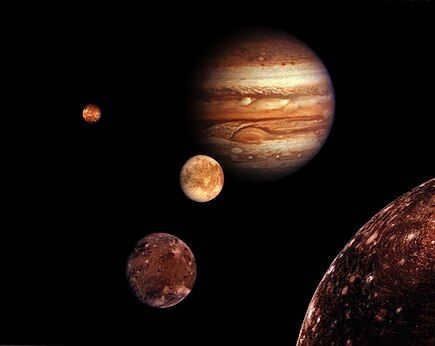
Out of the many moons that orbit Jupiter, eight are considered to be permanent satellites. These satellites have ProGrade orbits, meaning they move in the same direction as Jupiter’s rotation, and their orbits are nearly circular and not highly inclined with respect to Jupiter’s equatorial plane. The most famous of these satellites are the Galilean moons, which include Io, Europa, Ganymede, and Callisto. These moons are nearly spherical in shape due to their large mass, and if they were in a direct orbit around the Sun, they would be considered at least dwarf planets.
Jupiter also has four smaller satellites that are closer to the planet. These moons are responsible for the dust that makes up Jupiter’s rings.
The remaining satellites of Jupiter have irregular shapes and their orbits are much farther from Jupiter. They have large inclinations and eccentricities, meaning their orbits are not as circular and are more inclined with respect to Jupiter’s equatorial plane. These satellites were likely captured by Jupiter from solar orbits.
There are a total of twenty-two unusual satellites that have not yet been officially named.
Distinctive Features

The moons of Jupiter known as the Galilean moons are Io, Europa, Ganymede, and Callisto. They are arranged in order of increasing distance from Jupiter, from left to right.
Origin and development
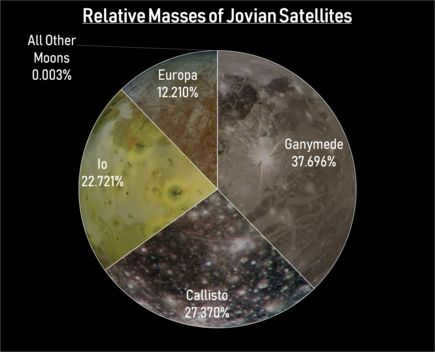
The relative sizes of Jupiter’s moons are shown in the image above. Moons smaller than Europa are not visible at this scale, but can be seen at 100x magnification.
Scientists believe that Jupiter’s moons were formed from a ring of gas and debris called a periplanetary disk, similar to the disk of material that surrounded the planet during its early formation. These moons may be the remnants of larger moons that formed early in Jupiter’s history.
According to modeling, even though the disk had a relatively high mass at any given time, a significant portion (around a few tens of percent) of the mass of Jupiter captured from the solar nebula passed through it. However, only 2% of the mass of Jupiter’s protodisk is needed to account for the current satellites. As a result, there could have been multiple generations of moons with masses similar to the Galilean moons in Jupiter’s early history. Each generation of moons could have spiraled into Jupiter due to the drag from the disk, and new moons would then have formed from fresh debris captured from the solar nebula. By the time the current (possibly fifth) generation formed, the disk had become thin, so it had less impact on the moon orbits. The current Galilean satellites were still exposed, falling and partially stabilized by the orbital resonance that still exists between Io, Europa, and Ganymede. Ganymede’s larger mass caused it to migrate inward faster than Europa or Io.
Exploration
The current count of satellites discovered around each of the four outer planets as of October 2019. Presently, Jupiter has 79 confirmed satellites.
According to Chinese historian Xi Zeqiong, the earliest reference to a satellite of Jupiter (either Ganymede or Callisto) can be found in the records of Chinese astronomer Gang De, who noted an observation of a relatively “reddish star” around 364 BC. However, the first verifiable observations of Jupiter’s satellites were made by Galileo Galilei in 1609. By January 1610, using his 20x magnification telescope, he had observed four massive Galilean satellites and published his findings in March 1610.
Simon Marius made an independent discovery of the moons the day after Galileo, but he didn’t publish his findings until 1614. However, the names that Marius gave to the moons – Ganymede, Callisto, Io, and Europa – are still used today. It wasn’t until 1892 that E.E. Barnard observed Amalthea, marking the next discovery of a satellite.
Telescopic photography played a crucial role in facilitating numerous breakthroughs throughout the 20th century. The year 1904 saw the discovery of Himalia, followed swiftly by Elara in 1905, Pasiphae in 1908, Sinop in 1914, and Lysithea and Karma in 1938. Ananke joined the list in 1951, with Ice being the latest addition in 1974. By the time the Voyager spacecraft arrived at Jupiter in 1979, a total of 13 moons had been identified, excluding Themisto, which had been initially observed in 1975 but subsequently lost due to insufficient raw observational data until its rediscovery in 2000. Additionally, the Voyager mission brought to light the existence of three more inner moons in 1979: Metida, Adrastea, and Phoebe.
For a period of twenty years, no new satellites were found. However, from October 1999 to February 2003, scientists were able to detect 34 more satellites using advanced ground-based detectors. These satellites are actually small moons that orbit in long, eccentric, and often retrograde orbits. On average, they are about 3 km (1.9 miles) in diameter, with the largest ones measuring just 9 km (5.6 miles) in diameter. It is believed that all of these satellites were captured by asteroids or possibly comets, and may have broken into multiple pieces.
In September 2020, a group of scientists from the University of British Columbia discovered 45 potential satellites after examining old photos taken in 2010 by the Canada-France-Hawaii Telescope. These satellites were mostly small and dim, with a diameter of up to 25.7 or more than 800 meters (0.50 miles). By estimating the number of potential satellites found in a specific area of the sky, the team concluded that there are approximately 600 retrograde satellites around Jupiter that are brighter than 25.7 sidereal magnitude, with a margin of error of about 2. These findings include Jupiter’s moons, although their existence has not been confirmed due to limited data on their orbits.
Appellation
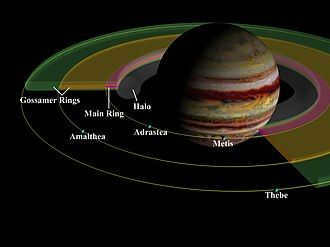
Several asteroids share names with Jupiter’s moons, such as 9 Metis, 38 Leda, 52 Europa, 85 Io, 113 Amalthea, and 239 Adrastea. In the past, two other asteroids were also named after Jupiter’s moons, namely Ganymede and asteroid 1036 Ganymede, as well as Callisto and asteroid 204 Callisto. However, the International Astronomical Union (IAU) decided to eliminate the spelling differences between the asteroids and the moons.
The orbits of Jupiter’s irregular satellites and their grouping can be represented in various ways. One way is by their major semi-axis on the horizontal axis (measured in Gm), their orbital inclination on the vertical axis, and their orbital eccentricity indicated by yellow lines. The relative sizes of the satellites are shown by circles.
The Conventional Satellites
The conventional satellites of Jupiter have orbits that are straight and nearly circular, with low inclination. They can be divided into two groups:
- Inner satellites or the Amalthea group. The satellites known as Metida, Adrastea, Amalthea, and Phoebe are in close orbit around Jupiter. In fact, the two inner satellites complete their orbit in less than one Jupiterian day. Among these, Amalthea is the largest, while Phoebe is the seventh largest satellite in the Jupiter system. It is believed that Amalthea did not originally form in its current orbit, but rather farther away from the planet, or that it was captured from another solar system. These moons, along with other visible and yet undiscovered inner moons (referred to as the Moons of Amalthea), contribute to and sustain Jupiter’s faint ring system. Metida and Adrastea contribute to Jupiter’s main ring, while Amalthea and Phoebe support their own faint outer rings.
- The primary cluster or Galilean moons Io, Europa, Ganymede, and Callisto represent a significant presence in the solar system, outweighing any known dwarf planet in terms of mass. Ganymede even surpasses (and Callisto comes close to) the planet Mercury in size, despite being less massive. These four celestial bodies hold the titles of the fourth, sixth, first, and third largest natural satellites in our solar system, collectively accounting for approximately 99.997% of the total mass orbiting around Jupiter. It’s worth noting that Jupiter itself is nearly 5000 times more massive than these Galilean moons. The inner moons exhibit a fascinating orbital resonance ratio of 1:2:4. Scientific models suggest that these moons formed through a gradual accumulation process within Jupiter’s low-density subnebula, a gas and dust disk that existed around the planet after its initial formation. This process is estimated to have taken up to 10 million years for Callisto. Additionally, there is speculation that some of these moons may harbor subsurface oceans.
Irregular moons
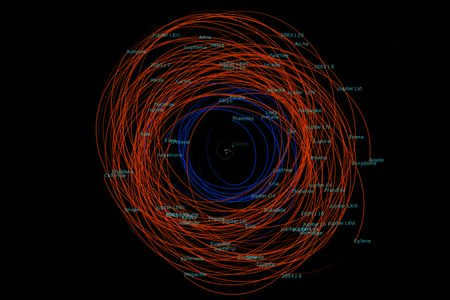
As of January 1, 2021, the orbits and positions of Jupiter’s irregular satellites are displayed. The progressive orbits are distinguished by their blue color, while the retrograde orbits are depicted in red.
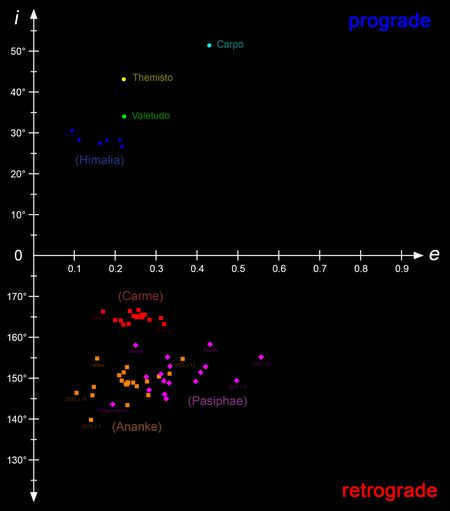
The inclinations (in degrees) and eccentricity of Jupiter’s irregular satellites are provided below, along with the definition of major groups. The data is current as of 2021.
The irregularly shaped satellites are smaller objects with orbits that are more distant and eccentric. They can be grouped together based on similarities in their orbits (including major semi-axis, inclination, and eccentricity) as well as their composition. It is believed that these satellites are part of collisional families, which were created when larger parent bodies were destroyed by asteroid impacts that were captured by Jupiter’s gravitational field. These families are named after their largest members. The identification of satellite families is not definitive, but the following are commonly recognized:
- Prograde satellites:
- Themisto is a moon with an irregular shape and does not belong to any known family.
- The Himalia group has a major semi-axis of only 1.4 Gm, an inclination of 1.6° (27.5 ± 0.8°), and eccentricities ranging from 0.11 to 0.25. Some scientists believe that this group might be a leftover from an asteroid breakup in the asteroid belt.
- Carpo is another moon that does not belong to a known family. It has the highest inclination among all the progressive moons.
- Valetudo is the most distant moon and does not belong to any known family. Its orbit directly crosses paths with several moons that have retrograde orbits, raising the possibility of future collisions.
- The Ananke group is more spread out compared to previous groups, with a major semi-axis of over 2.4 Gm, an inclination ranging from 145.7° to 154.8°, and eccentricities varying between 0.02 and 0.28. These members are mostly gray in color and are believed to have formed from the breakup of a captured asteroid.
- The Pasiphae group is characterized by a significant scattering, with a spread of over 1.3 Gm, inclinations ranging from 144.5° to 158.3°, and eccentricities between 0.25 and 0.43. The colors of the members in this group also vary greatly, ranging from red to gray, which suggests multiple collision events. Sinope, which is sometimes included in the Pasiphae group, stands out as red in color and may have been captured independently due to its different inclination. Both Pasiphae and Sinope are also trapped in age resonances with Jupiter.
Enumerate
The list below shows the orbital period of Jupiter’s satellites. Satellites that are massive enough for their surfaces to form into spheroids are highlighted in bold. These bold satellites, known as the Galilean satellites, are similar in size to the Moon. The other satellites are much smaller, with the least massive Galilean moon being over 7000 times more massive than the largest of the other satellites. These irregular satellites, which were captured by Jupiter, are shaded light gray when they orbit in the same direction as Jupiter’s rotation (prograde) and dark gray when they orbit in the opposite direction (retrograde). The orbits and average distances of the irregular satellites can change significantly over short periods of time due to gravitational influences from both Jupiter and the Sun. Therefore, all orbital elements listed are based on a Julian date of 2459200.5, or December 17, 2020. As of 2021, only S/2003 J 10 is considered lost due to its uncertain orbit. Some other satellites have only been observed for one or two years, but their orbits are currently well-measured.
It is difficult to fathom human existence without the Moon, the beloved and sole satellite of Earth. Nearly every planet possesses its own satellite, even the asteroid named Ida has one.
The origins of these satellites and our own origins, as well as the existence of life on other planets, remain unknown to scientists.
Today, we will discuss the ten largest satellites of Jupiter, the fifth planet from the central star of our solar system.
Jupiter is a gas giant with 79 satellites of various sizes and shapes. Some are home to active volcanoes, while others are covered by a deep ocean surrounded by ice. Certain satellites contain more water than Earth and may harbor life. The mountains on some satellites surpass the height of Mount Everest, while others do not exceed 50 meters.
10. Pasiphae, 58 square kilometers
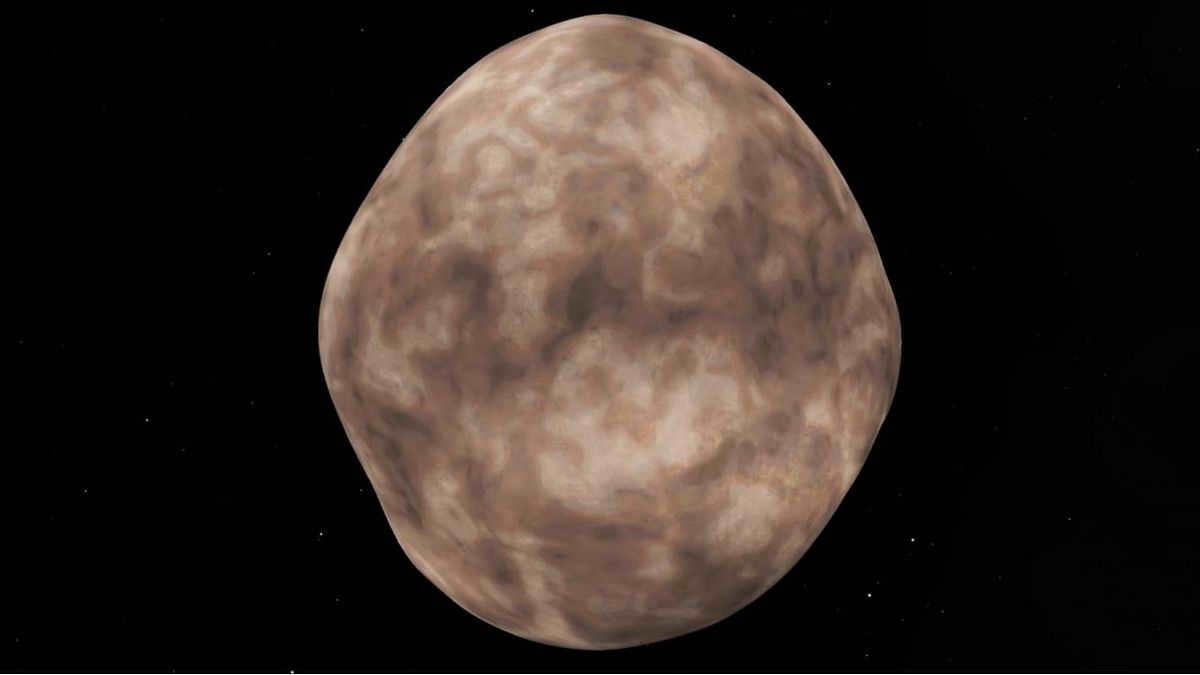
The celestial body, known as Pasiphae, orbits Jupiter in a unique manner, rotating in the opposite direction. This satellite derived its name from a mythological figure, who was reputed to be the mother of the Minotaur.
Pasiphae was initially detected by a British astronomer, who specialized in the study of celestial objects. The orbital period of this satellite, as it revolves around Jupiter, spans a duration of approximately 708 days.
9. Metida, measuring 60×40×34 km.
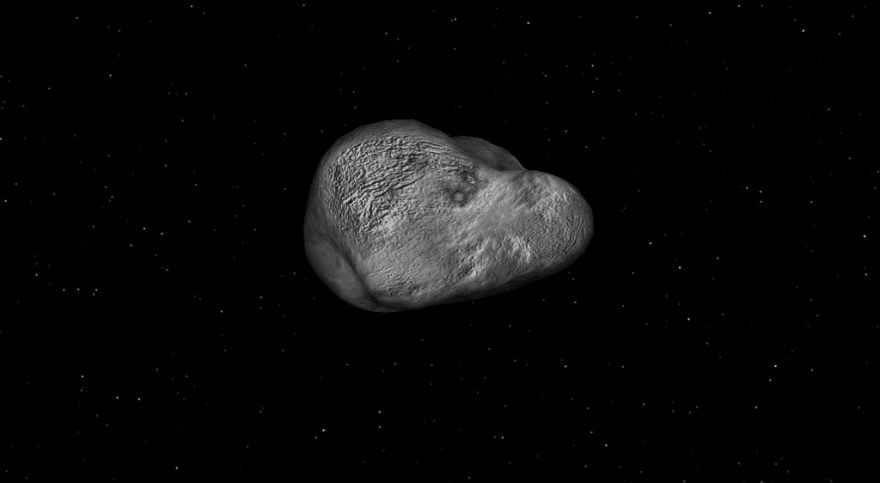
Jupiter’s moon Metida stands out with its red surface color and its asymmetrical shape. Discovered in 1979 by the Voyager spacecraft and scientist Stephen Sinnott, the moon is also known as Metis.
This celestial body has been poorly studied due to its close proximity to Jupiter, making it a dangerous and impossible mission to approach. When it intersects with Jupiter’s main ring, Metis creates a hole, sacrificing its own fragments to form the ring.
Scientists believe that a collision between Jupiter and this moon is inevitable due to its trajectory and speed.
8. Elara, 78 square kilometers
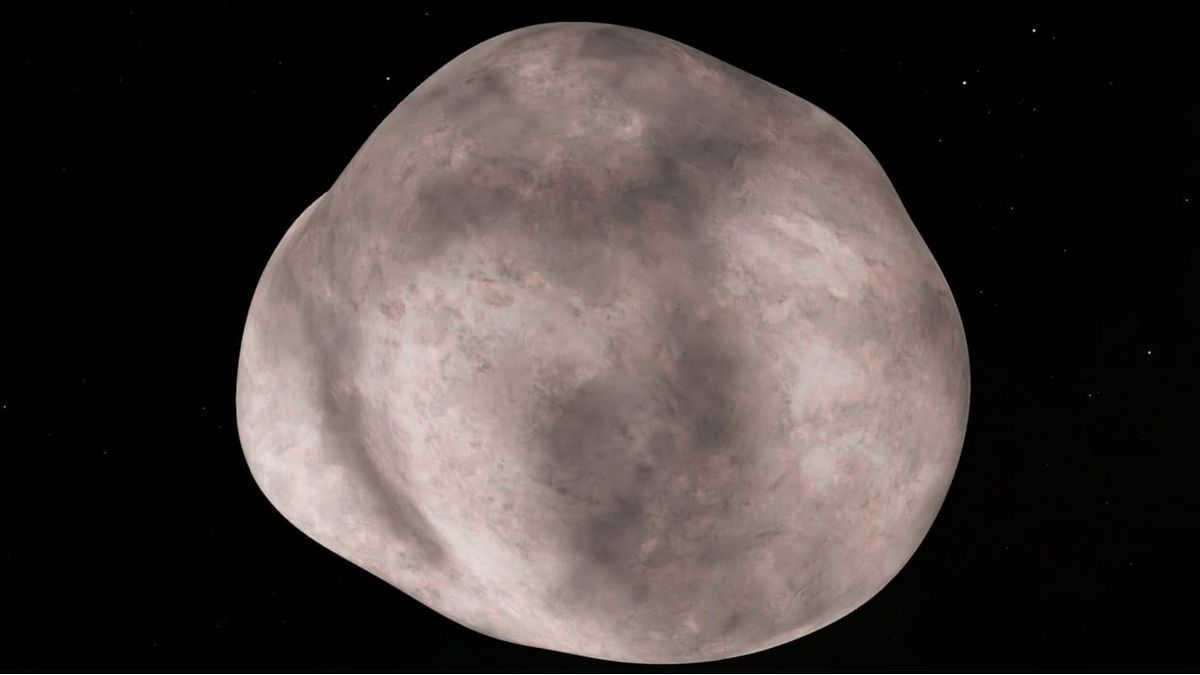
This celestial body is classified as an irregular satellite orbiting the planet Jupiter. In various scientific papers, it is commonly referred to as Jupiter VII. The renowned American-Argentine astronomer Charles Perraine was the first to discover this satellite. This groundbreaking event occurred at the Lick Observatory in February 1905. Situated at an altitude of 1,200 meters on the slopes of Mount Hamilton in the United States, the observatory played a crucial role in this significant discovery.
It wasn’t until 70 years later, in 1975, that the satellite was officially given its current name. It was christened after the prominent figure from Greek mythology, Elara. Elara was Zeus’s beloved, whom he had to conceal on Earth. She gave birth to a colossal son but tragically passed away during childbirth.
7. Thebes, measuring 116×98×84 kilometers in size
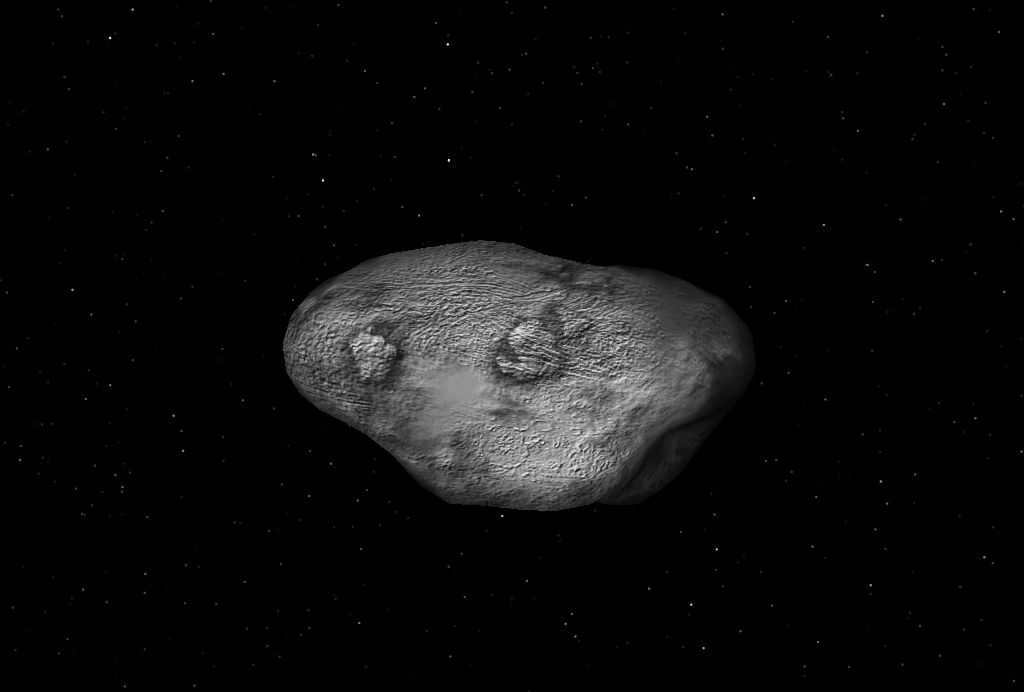
This celestial body is the moon that orbits around Jupiter. When it comes to their distance from Jupiter, Phoebe ranks as the fourth most distant moon. However, in terms of all natural satellites, it holds the record for being the farthest. Not only is it one of the largest moons at Jupiter, but it also ranks among the largest in the entire solar system.
Phoebe has dimensions of 116×98×84 kilometers. It was initially identified by American astronomer and scientist Stephen Sinnott, who also made the discovery of several other moons of Jupiter. However, later investigations revealed that this moon had already been captured in earlier images.
The official date of its discovery is recognized as February 5, 1979, although it was initially observed on February 27 of that year. It is named after the legendary nymph Thebes, who was the offspring of the river god. The morphology of the moon is atypical. Phoebe is tidally locked with the planet, meaning it always presents the same face towards Jupiter. Its appearance is rather formidable. The surface is characterized by dark hues with gradual shifts to vibrant red shades.
6. Himalia, with an area of 160 square kilometers
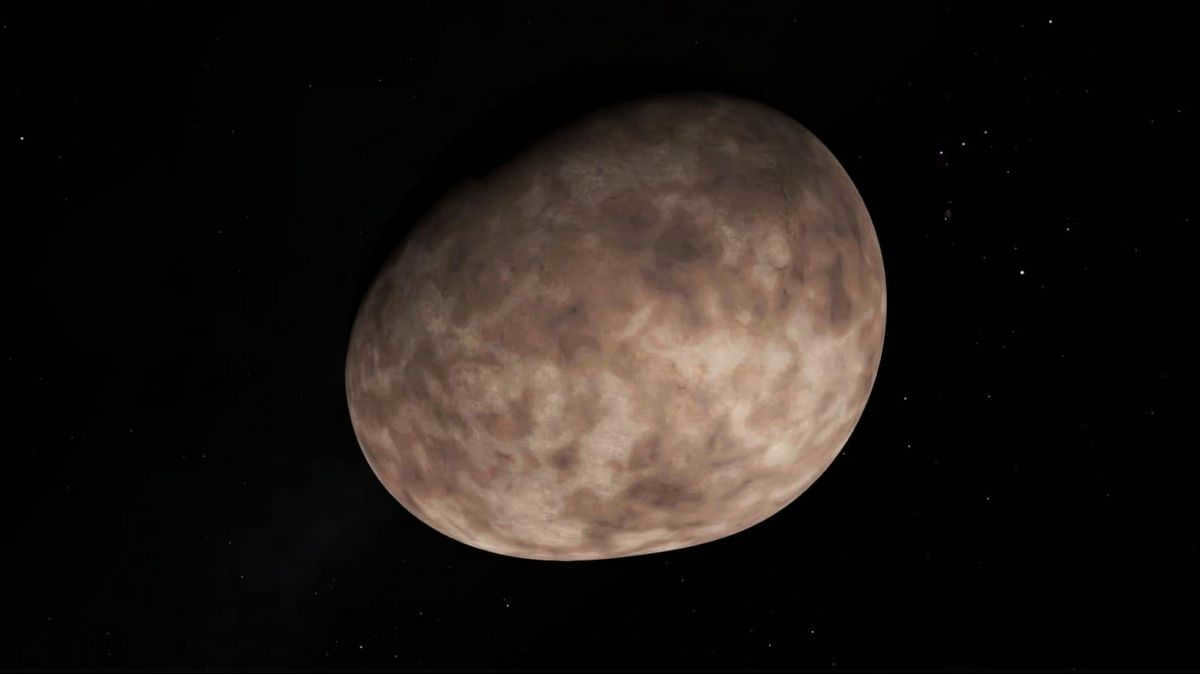
A celestial body revolving around Jupiter, which goes by the name of the mythical nymph Himalia, exhibits a rather lackluster appearance with its predominant gray hue. However, in spite of its dull coloration, Himalia stands out as the most luminous among the outer satellites. With a diameter of 160 kilometers, it ranks among the top ten largest satellites.
The imagery was captured in 2000, almost a century after the satellite’s initial discovery in 1904. In 1975, it was bestowed with its present-day appellation in tribute to the nymph Himalia – a mythical figure who bore children to Zeus.
This satellite orbits at a distance ranging from 9.8 to 13 million kilometers from the planet. Although the precise shape of Himalia remains unknown, it is commonly described as spherical.
5. Amalthea, with dimensions of 250×146×128 kilometers.
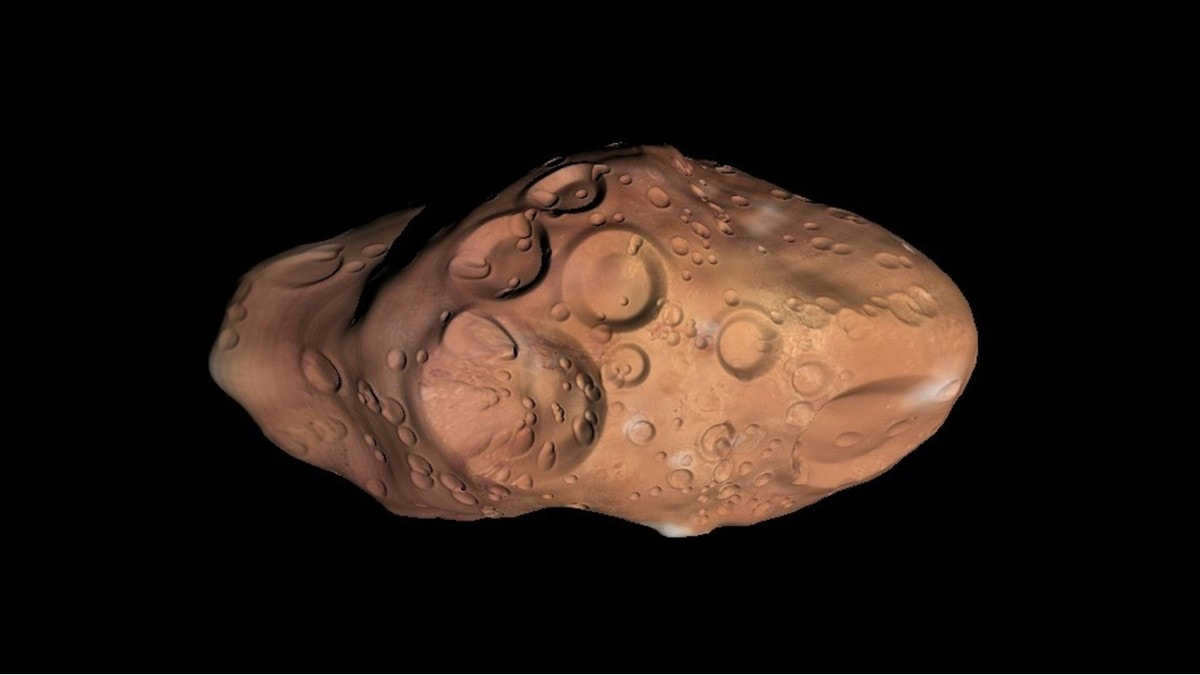
The moon, resembling the appearance of a familiar tuber, is primarily composed of water ice. Despite its high concentration of ice, which serves as the primary component of Amalthea, the moon appears red in color.
This phenomenon can be attributed to precipitation from the volcanoes on Io or to organic activity. Additionally, despite its considerable distance from the Sun, Amalthea is still able to generate significant amounts of thermal energy.
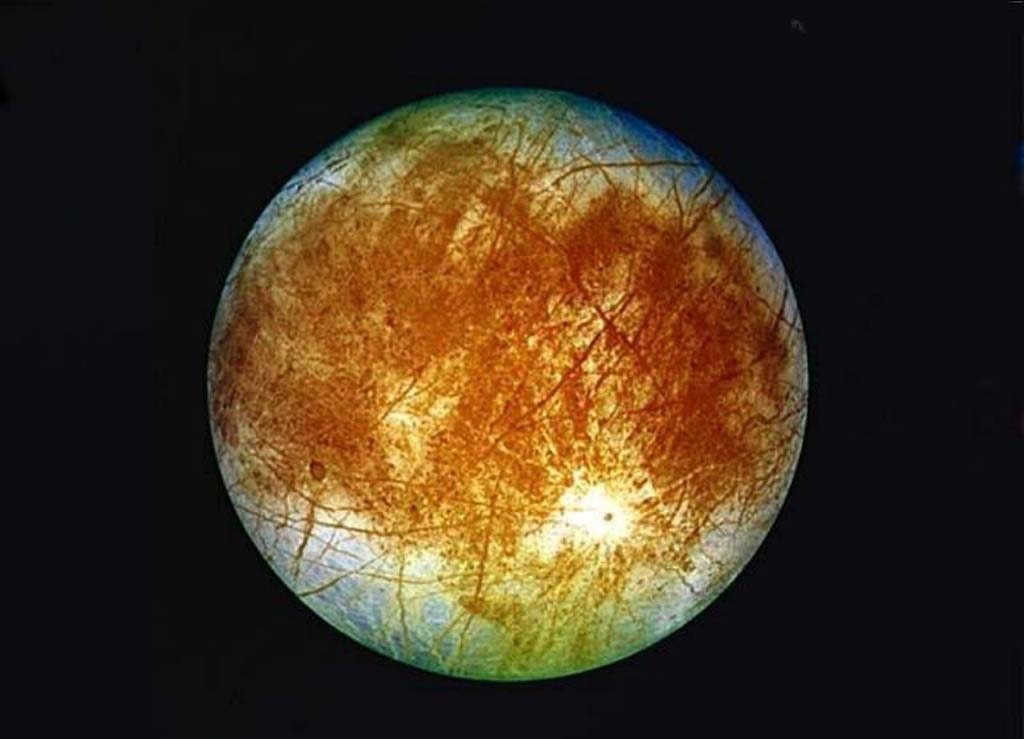
Europa, a satellite whose name is well known, is a fascinating subject for study. What makes it so intriguing is that its entire surface is covered in ice, which is believed to hide a vast ocean underneath. This discovery has sparked great optimism that there could potentially be life on Europa.
3. Io, with an area of 3,643 square kilometers
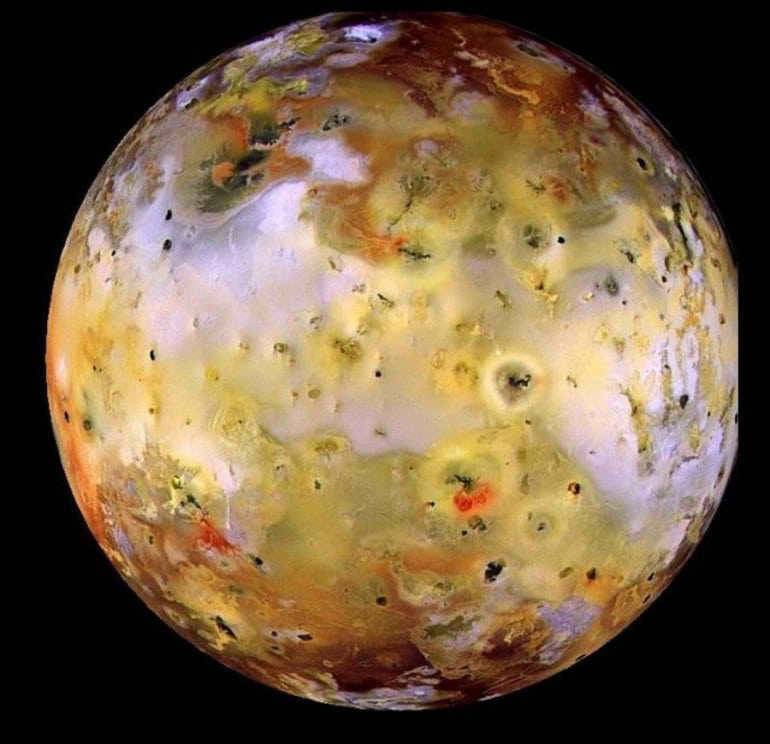
Galileo Galilei discovered this moon, which is named after Zeus’ lover. It has a unique, swampy hue caused by the abundance of sulfur on its surface.
One distinguishing characteristic is the geological activity of this celestial object, which is linked to a vast number of volcanoes, with temperatures that soar to thousands of degrees above zero Celsius. Io always keeps the same side facing Jupiter, much like our own Moon. Space explorers have detected a faint atmosphere surrounding Io.
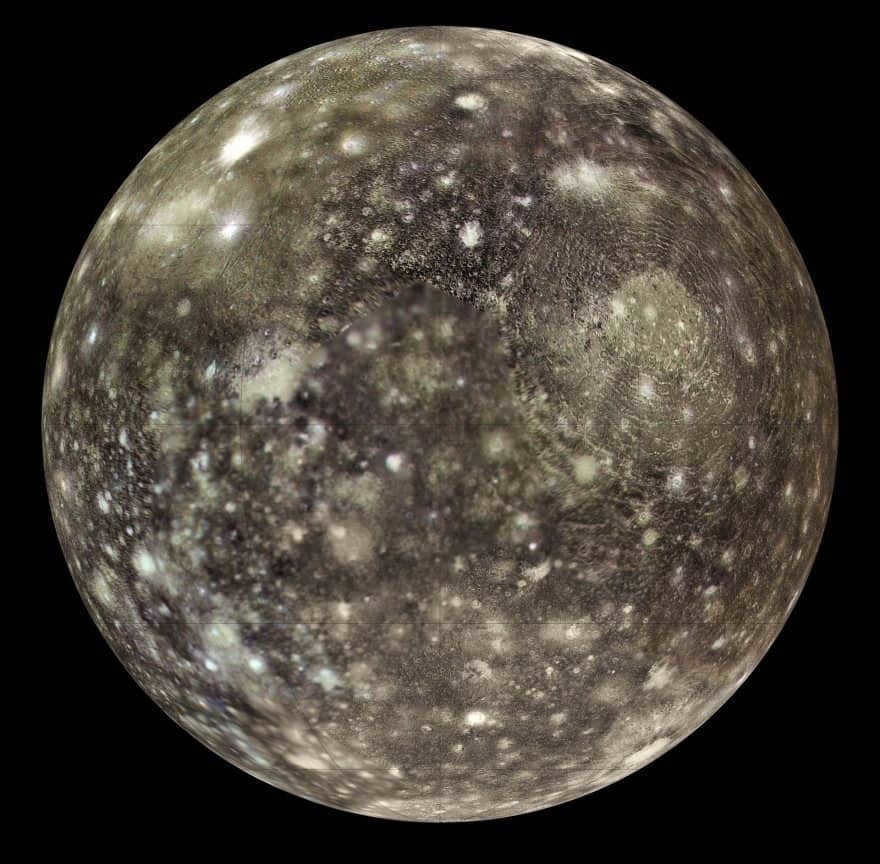
The farthest satellite from Jupiter is Callisto, which was first observed by Galileo and is also the second largest. It is made up of a combination of rock, solid ammonia, and ice.
Callisto’s surface is covered in countless scars caused by meteorite impacts. Some of these scars are billions of years old, as the satellite lacks the necessary factors to regenerate its surface.
Because of its distance from Jupiter, Callisto experiences background radiation levels more than 6 times lower than Earth’s. Its atmosphere is primarily composed of carbon dioxide and is very thin. Callisto completes a full orbit around Jupiter in approximately 17 days.
1. Ganymede, with a surface area of 5,262 square kilometers
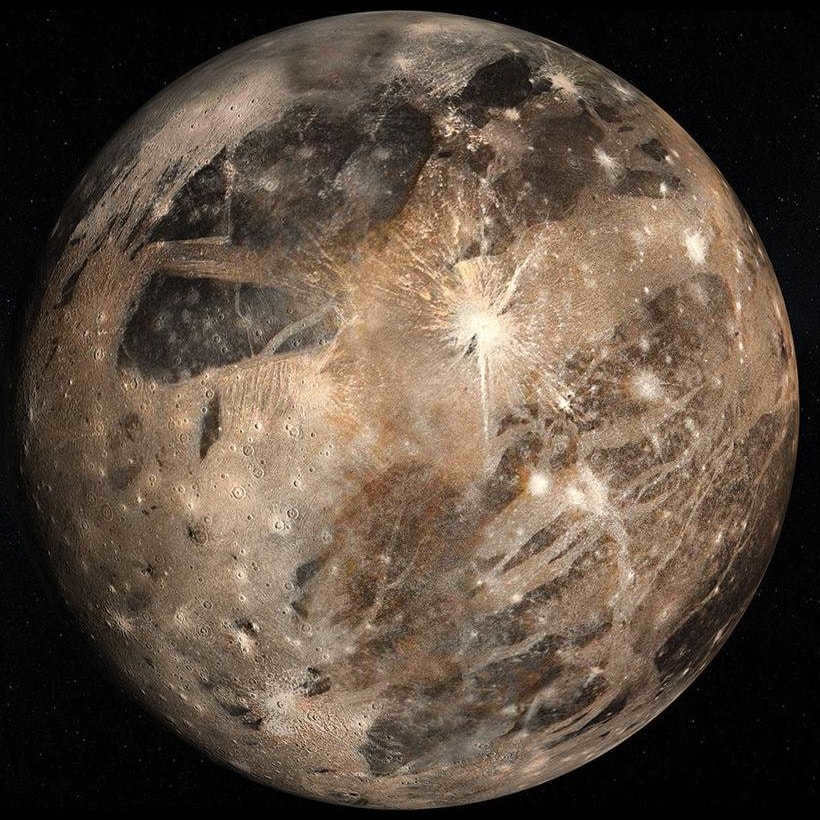
The largest moon of Jupiter is called Ganymede. It is incredibly large, even larger than some planets in our solar system like Pluto and Mercury. Ganymede is unique because it has its own atmosphere, although it is not strong enough to support life.
This celestial body was first discovered by Galileo Galilei in 1610. It is estimated to be around the same age as Jupiter, approximately four and a half billion years old.
In comparison to Earth, Ganymede is extremely cold with temperatures dropping below -170 degrees Celsius. It also has its own magnetic field. Some lucky and observant individuals may even be able to see Ganymede from Earth without the need for special equipment.
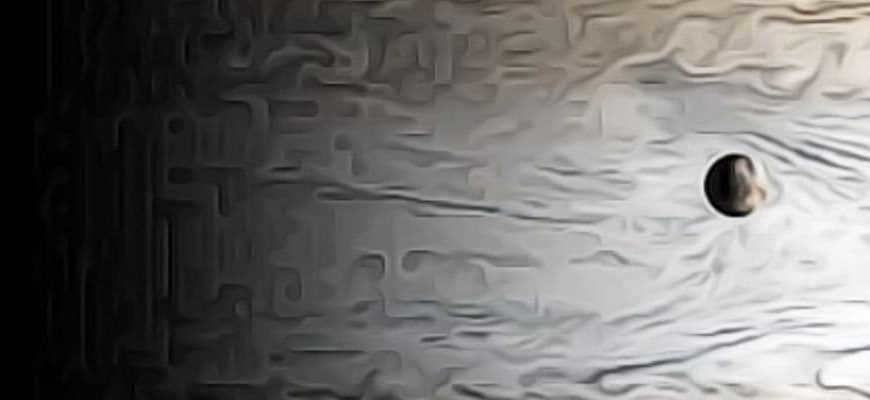
Jupiter is the ruler of the celestial bodies. It possesses an immense magnitude and is easily discernible in the nocturnal heavens. Furthermore, even its four comparatively diminutive satellites emit sufficient luminosity to be detected with the most rudimentary telescopes. Scientists from Earth have dispatched a total of nine exploratory vehicles to either encircle or approach the planet. However, in a more recent development this year, additional satellites associated with Jupiter have been discovered. A staggering total of 22, which brings the overall count to 79. The question arises, why were these entities not detected earlier?
Jupiter’s Moons: Starting with the Easier Targets
The reason why most of Jupiter’s moons are not commonly known is because they are relatively small compared to the planet itself. While the four moons discovered by Galileo in 1610 – Io, Europa, Ganymede, and Callisto – are larger than our Moon, they are still tiny in comparison to Jupiter. These moons are the easier targets to observe. However, identifying and detecting new moons of Jupiter is a difficult task, as they are hard to distinguish against the backdrop of the massive gas giant.
It was only with the invention of photography and its application to astronomical research that astronomers were able to uncover new moons of Jupiter. This painstaking work took place over the course of the next century. By the time Voyager embarked on its mission in 1979, Jupiter was already known to have 13 moons. Voyager’s mission added three more moons to the list: Metida, Adrastea, and Phoebe.
The regular group of Jupiter’s moons consists of these three satellites, along with Amalthea (which was discovered in 1892 by the renowned astronomer E. E. Barnard) and the Galilean satellites. This group is characterized by their orbits being mostly circular and the bodies on them rotating in the same direction as Jupiter. Additionally, these orbits are nearly aligned with the plane of the planet’s equator.
The remaining satellites exhibit irregular shapes, and these constitute the majority of Jupiter’s moons. These celestial bodies generally resemble the form of a potato. Their orbits often deviate from the norm, being eccentric, inclined, or even retrograde, meaning they travel in the opposite direction of Jupiter’s rotation. It is likely that most of these objects are captured asteroids or the remnants of ancient collisions between larger bodies. These moons are relatively small in size and tend to orbit Jupiter at greater distances compared to regular moons, making them significantly more challenging to detect.
Astronomers have identified numerous such irregular moons, although the pace of discoveries slowed down following the Voyager mission and remained stagnant for approximately twenty years.
Afterwards, Scott Sheppard made an appearance. A group of astronomers from the Carnegie Institution stumbled upon 60 of Jupiter’s 79 recognized moons. While all of them have irregular shapes, it is still a remarkable achievement. Sheppard’s team has been uncovering moons around Jupiter since the year 2000. In just the previous year, they managed to add approximately twelve new moons to the tally. These fresh satellites contribute to our comprehension of Jupiter’s vicinity and aid astronomers in understanding the formation of the planet and its surroundings throughout history.
Jupiter’s irregular moons are relatively small, measuring just a few kilometers in diameter. They do not share the same complexity as worlds like Europa or Ganymede, or even our own Moon. Externally, they appear to be misshapen pieces of rock floating at a distance from Jupiter’s surface. Therefore, the telescopes that locate them must possess a high level of sensitivity and either survey large expanses of space or rely on sheer luck.
Detecting minuscule spots
In recent years, astronomers have significantly enhanced their equipment, enabling them to survey vast areas of the sky simultaneously. Naturally, telescopes have also improved. However, the key to detecting any new satellites of Jupiter lies in dedicating a substantial amount of time to searching for extremely faint objects.
The discovery of numerous irregular moons, in and of itself, is not considered a groundbreaking revelation (though there are a few peculiar exceptions). However, what does it collectively reveal? The assortment of celestial bodies that serve as Jupiter’s satellites, both regular and irregular, tells a fascinating and extensive tale about the conditions prevailing around the solar system’s largest planet.
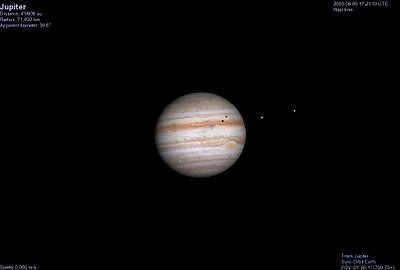
Jupiter possesses a multitude of exceptional qualities that set it apart. Had it been just 3 or 4 times larger, it could have easily transformed into a star. However, due to its insufficient mass, Jupiter remained a colossal gas giant. Nevertheless, it still reigns supreme, being over 2.5 times larger than the sum of all the other planets combined.
There is another fascinating aspect when it comes to Jupiter – its satellites. Up to this point, scientists have found a total of 67 satellites orbiting the gas giant. The largest satellite in the solar system can also be found orbiting Jupiter, but in addition to this behemoth, there are smaller satellites that have been inadvertently attracted by the planet’s atmosphere, such as meteorites. The initial discovery of four satellites was credited to Galileo, and since then, numerous astronomers have made their own discoveries. Interestingly, the search for these satellites is ongoing as it is theoretically possible for Jupiter to have up to 100 satellites. However, the truly significant ones are few in number, and today we will delve into their stories. It is worth noting that all of Jupiter’s satellites are in some way connected to the god of thunder and lightning, Zeus, and each has its own unique tale, often revolving around love.
Ganymede
can be paraphrased as follows:
The moon called Ganymede
.
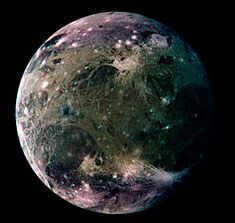
Quite a picturesque surface
Talking about this Jupiter satellite, it will be necessary to use the word “only” more than once:
- It is the sole satellite of Jupiter that carries a male name. Ganymede served as the gods’ cupbearer and, according to one account, was even his lover. All the other satellites of Jupiter are female.
- Ganymede is the singular satellite in the entire solar system that possesses its own magnetosphere and even a small atmosphere containing oxygen, albeit very sparse and thin.
- Ganymede is not exclusively the largest satellite of Jupiter, but also the most colossal in the entirety of the solar system. It surpasses the Moon in size and even surpasses Mercury. Its diameter measures 5,268 kilometers.
Callisto
The second largest moon of Jupiter, Callisto, is slightly smaller in diameter compared to Ganymede. However, it still has a significant size, with a diameter of 4820 kilometers, larger than our Moon. Callisto was one of the four moons discovered by Galileo in 1610 as part of his observations of Jupiter.
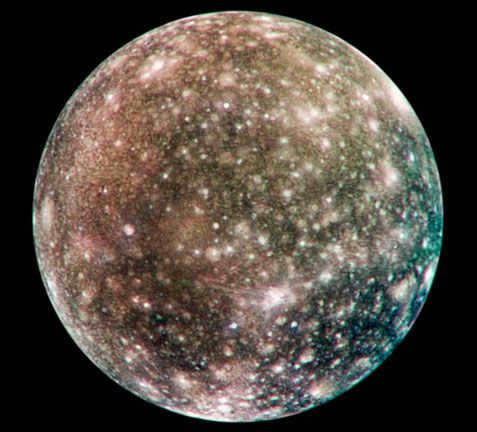
Callisto, one of Jupiter’s many moons, is characterized by its size and icy surface. It is also known for its abundance of craters.
Interestingly, the moon gets its name from a Greek mythological figure. Callisto was a young girl who served in the retinue of the huntress goddess Artemis. She was sworn to maintain her virginity, but Zeus, the king of the gods, fell in love with her and disguised himself as Artemis to sleep with her. When Hera, Zeus’s jealous wife, discovered their affair, she transformed Callisto into a bear. To immortalize his beloved, Zeus placed her in the sky as the constellation Ursa Major, also known as the Big Dipper.
However, at present, Callisto’s moon stands out as a particularly captivating celestial body. It boasts subterranean lakes and seas teeming with an assortment of chemical elements. Moreover, its considerable distance from Jupiter has granted it the advantage of significantly diminished radiation levels. Consequently, Callisto has rightfully earned its reputation as one of the most promising contenders for establishing an extraterrestrial research hub, facilitating the exploration of other planets and satellites within our solar system.
Io
In the past, the designation of Jupiter’s third largest moon (and the fourth largest in our solar system) was derived from figures linked to Zeus. Io used to be a priestess of Hera, Zeus’ consort. Following a night of passion, Hera, in her maliciousness, transformed her rival into a bovine creature and dispatched a relentless horsefly to pursue her. To alleviate her suffering, Zeus transformed her into a constellation resembling a young cow. According to an alternate version of the story, she fled to the body of water known as the Ionian Sea and eventually made her way to Egypt, where she was able to reclaim her original form.
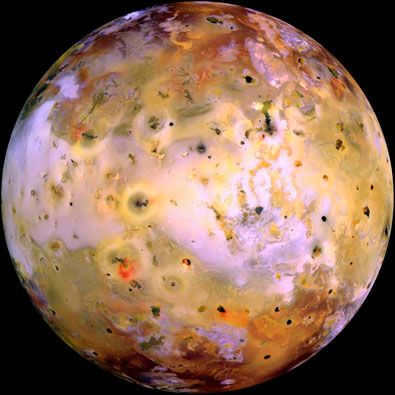
If there is a place in the solar system that resembles hell, it would likely be Io. The composition of its atmosphere is primarily sulfur dioxide, and sulfur makes up the majority of its soil. This moon, which has a diameter of 3,630 kilometers, is home to over 400 volcanoes that are active all year round. The constant eruption of lava and volcanic ash, primarily composed of various sulfur compounds, continuously alters the appearance of this celestial body.
Europa, the next target of the passionate Zeus, attracted his attention while she and her companions were frolicking on the beach. Zeus transformed into a majestic white bull and abducted her. Carrying her on his strong back, he swam across the vast sea and arrived on the island of Crete. It was there that an intriguing twist unfolded. Among the offspring of Europa was the legendary and notorious Minotaur.
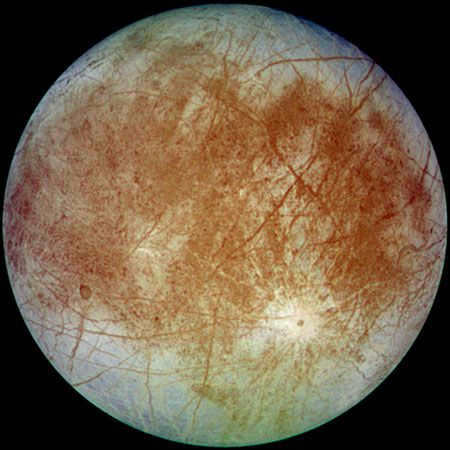
Everything fascinating lies beneath the icy surface
However, this is merely a misconception. Presently, Europa stands as one of the most beloved satellites among astronomers, as it holds the highest possibility of harboring extraterrestrial life, even if it’s in a microscopic form.
This is due to the presence of an subterranean ocean, which surpasses our own in depth by more than two-fold. Another advantage is the constant compression and stretching caused by its interaction with Jupiter’s gravitational field. This process “warms up” the satellite, despite its considerable distance from the Sun. Consequently, Europa remains in darkness, but maintains a sufficient warmth to sustain the existence of liquid water.
Europa, which is among Jupiter’s largest moons, is also one of the top four moons discovered by Galileo. In terms of the entire solar system, it also ranks among the top five, although it holds the last position. Moreover, it frequently appears in numerous science fiction movies and books as a possible planet capable of sustaining life.
Amalthea
If you believed that Amalthea was just another paramour of Zeus, you were mistaken. This is actually the goat that nurtured him during his infancy. Subsequently, Zeus adorned his shield, the Aegis, with its skin, and fashioned a Cornucopia (a gracious gesture) from one of its horns. All things considered, it was an extraordinary goat.
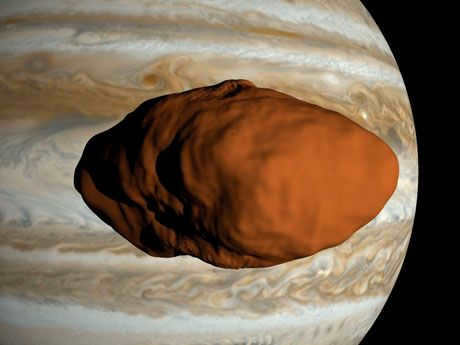
< p > Unlike the rest of the satellites, Amalthea doesn’t possess a conventional round shape. In reality, it appears as a heavily pockmarked chunk of rock. Its dimensions can’t even be averaged out, as they vary in each direction. Typically, its measurements are noted as 262 by 146 by 134 kilometers. < /p >
Himalia
Ganymede, Callisto, Io, and Europa are Jupiter’s largest satellites. The rest were discovered later and are smaller in size. Himalia has a diameter of approximately 183 kilometers.
It is named after an ordinary nymph, one of Zeus’s many lovers. However, this moon is more than just ordinary. Firstly, it is one of the largest irregular satellites, which sets it apart from the rest.
Himalia is also the largest satellite in the “Himalia group,” which consists of three others: Leda, Lysithya, and Elara. They have close orbits and most likely share a common origin.





